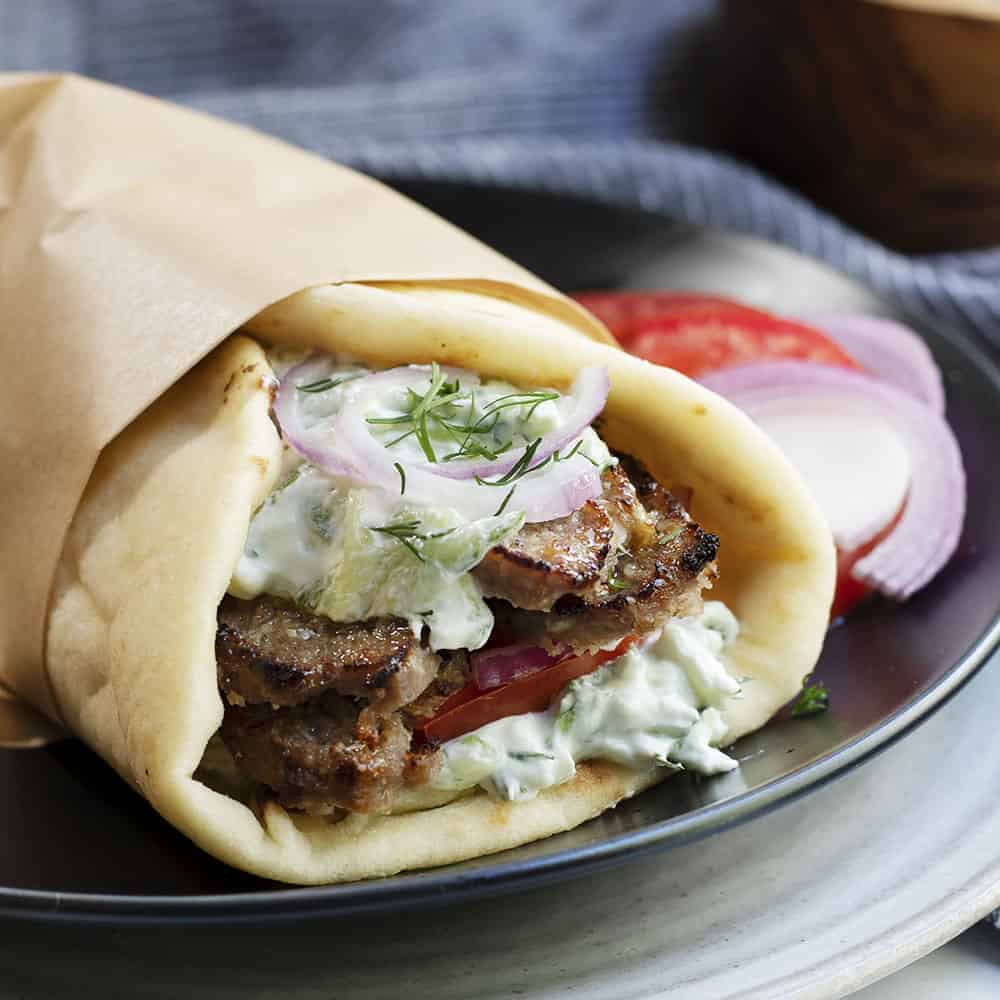Gyro: A Culinary Odyssey through Greek Culture and Flavor

Introduction: Nestled among the sun-kissed islands and ancient ruins of Greece, there exists a culinary delight that has captured the hearts and taste buds of food enthusiasts worldwide. Gyro, a savory meat dish wrapped in warm pita bread and topped with fresh vegetables and creamy tzatziki sauce, is not only a beloved street food in Greece but also a cultural icon that represents the vibrant flavors and rich traditions of Greek cuisine. Join us as we embark on a journey to uncover the origins, traditions, and techniques behind this iconic dish.
Origins of Gyro: The origins of gyro can be traced back to the Ottoman Empire, where it was inspired by the Turkish dish “döner kebab.” Döner kebab, which translates to “rotating roast,” consists of seasoned meat cooked on a vertical rotisserie and thinly sliced to order. When Greek immigrants brought the concept of döner kebab to Greece in the early 20th century, they put their own spin on the dish, creating what would later become known as gyro.
The word “gyro” is derived from the Greek word “γύρος,” which means “turn” or “rotate,” referring to the rotating spit on which the meat is cooked. Originally, gyro was made with lamb or beef, seasoned with a blend of herbs and spices, and cooked slowly on a vertical rotisserie until tender and flavorful. Over time, gyro evolved to include a variety of meats, including chicken, pork, and even vegetarian options.
Ingredients and Preparation: While there are many variations of gyro, the classic recipe typically consists of the following ingredients:
- Meat: The meat used in gyro is typically seasoned with a blend of spices such as oregano, thyme, garlic, and onion, then stacked onto a vertical rotisserie and cooked slowly until golden and crispy on the outside and tender and juicy on the inside. Traditional gyro meat is made from lamb or beef, although chicken, pork, and even vegetarian options are also popular.
- Pita Bread: Pita bread serves as the base of gyro, providing a soft and chewy texture that complements the savory meat and creamy sauce. The pita bread is typically warmed on a grill or in a toaster before being filled with the gyro ingredients.
- Toppings: Gyro is typically topped with a variety of fresh vegetables, including sliced tomatoes, onions, and lettuce, as well as tangy pickles and salty feta cheese. These toppings add texture and flavor to the dish, creating a satisfying balance of tastes and textures.
- Tzatziki Sauce: Tzatziki sauce, a creamy yogurt-based sauce flavored with cucumber, garlic, lemon juice, and dill, serves as the finishing touch to gyro. The cool, tangy sauce complements the savory meat and adds a refreshing burst of flavor to each bite.
Once all the ingredients are prepared, they are assembled together to create a delicious and satisfying meal that is perfect for any occasion.
Cultural Significance: Gyro holds a special place in Greek culture, serving as a symbol of hospitality, community, and culinary excellence. It is often enjoyed as a quick and convenient meal on the go, as well as a festive dish at celebrations and festivals.
In addition to its cultural significance in Greece, gyro has also gained popularity around the world, with Greek restaurants and food trucks serving up their own unique twists on the classic dish. It has even become a staple of street food culture in cities such as New York, London, and Melbourne, where it is enjoyed by locals and tourists alike.
Tips and Variations: While traditional gyro is made with seasoned meat, pita bread, vegetables, and tzatziki sauce, there are many variations of the dish that incorporate different ingredients and flavors. Some popular variations include:
- Chicken Gyro: Made with marinated and grilled chicken instead of lamb or beef, chicken gyro offers a lighter and leaner alternative that is equally delicious and satisfying.
- Pork Gyro: Made with seasoned and roasted pork instead of lamb or beef, pork gyro has a rich and savory flavor that pairs perfectly with the tangy tzatziki sauce and fresh vegetables.
- Vegetarian Gyro: Made with grilled vegetables such as eggplant, zucchini, and bell peppers, as well as falafel or grilled halloumi cheese, vegetarian gyro offers a delicious and nutritious option for vegetarians and vegans alike.
Conclusion: In conclusion, gyro is much more than just a dish—it’s a culinary journey that celebrates the vibrant flavors and rich traditions of Greek cuisine. From its humble origins as a Turkish-inspired street food to its status as a beloved symbol of Greek culture, gyro continues to captivate and delight food lovers of all ages.
So whether you’re savoring it on a bustling street corner in Athens or trying it for the first time in your own kitchen, one thing is for certain: gyro is a timeless classic that never fails to impress. So why not indulge in a taste of Greece’s culinary heritage and experience the magic of gyro for yourself? Kali orexi!




